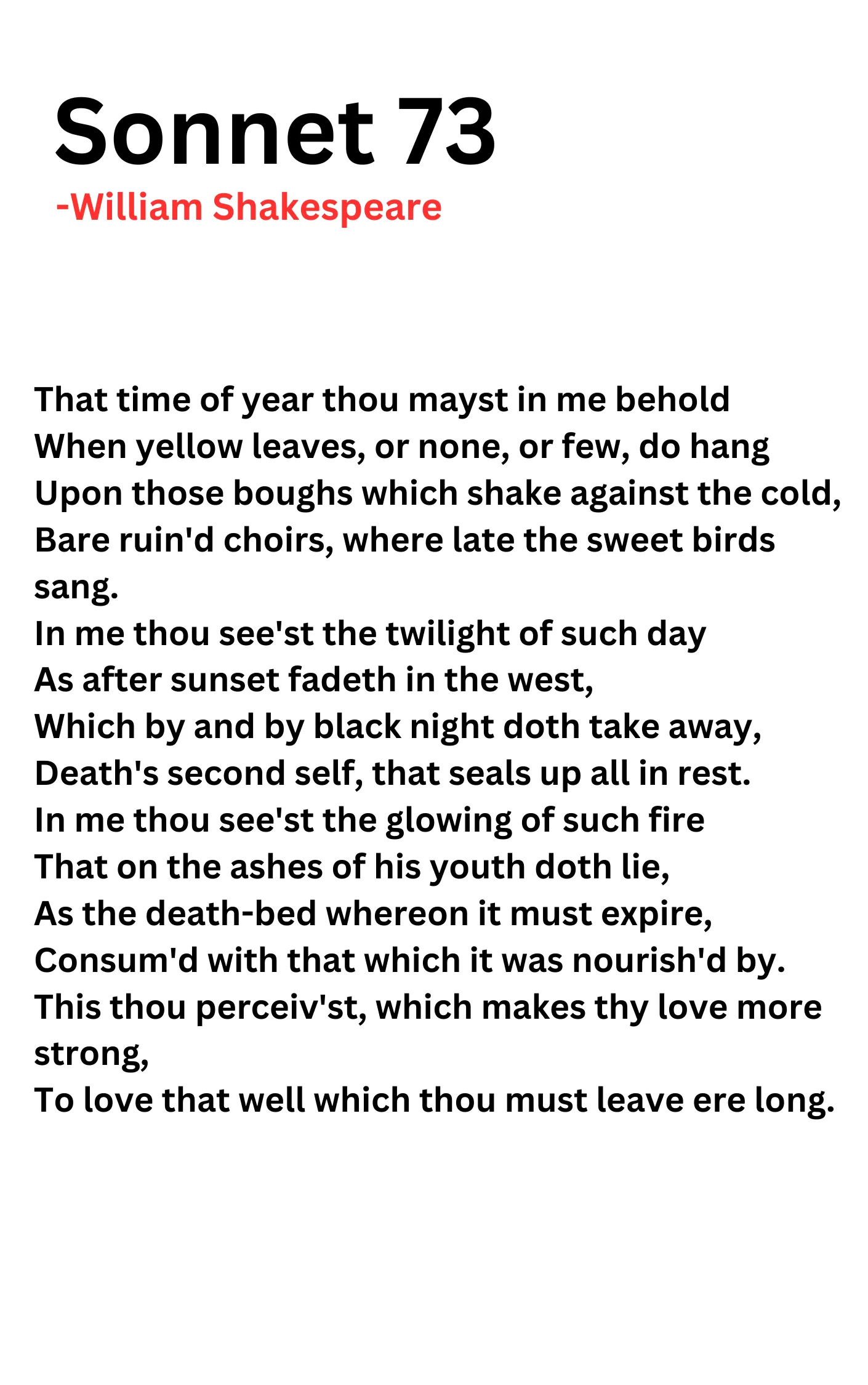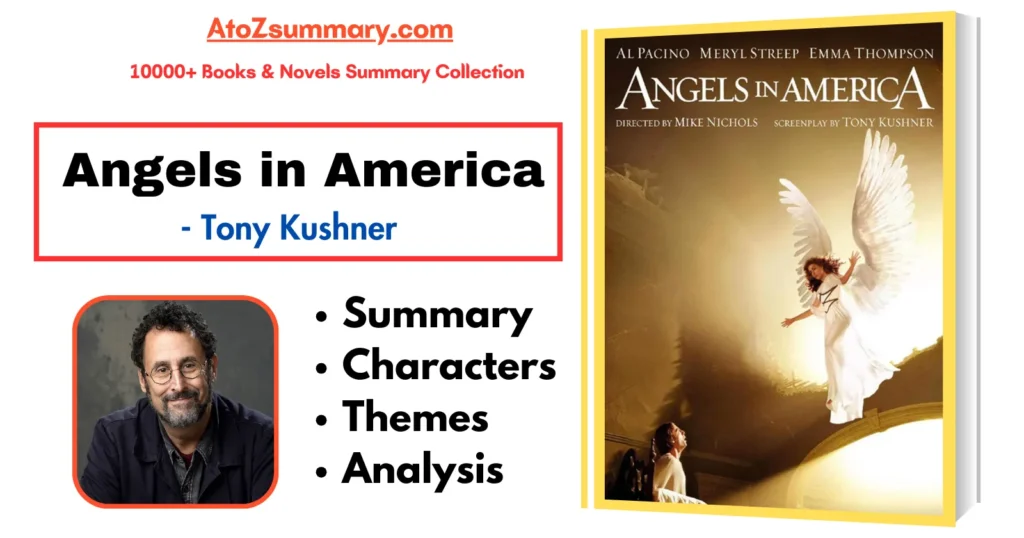About- Sonnet 73
| Poem | Sonnet 73 |
|---|---|
| Author | William Shakespeare |
| Genre | Sonnet |
| Form | English or Shakespearean sonnet (three quatrains and a couplet) |
| Meter | Iambic pentameter |
| Rhyme scheme | ABAB CDCD EFEF GG |
| Speaker | The speaker is addressing their beloved, but the poem is also a meditation on mortality. |
| Setting | The setting is unspecified, but the poem evokes images of autumn, twilight, and dying embers. |
| Theme | Mortality, aging, and love |
Sonnet 73 Poem

Sonnet 73 Summary
“Sonnet 73” by William Shakespeare is a 14-line poem that explores themes of aging, death, and the fleeting nature of human life and love. The poem can be divided into three quatrains and a final rhymed couplet, and each section carries a distinct theme and metaphorical imagery. Here is a stanza-by-stanza summary:
Stanza 1: The first quatrain of the sonnet begins with the speaker describing the autumn season, comparing it to the time of life when one is in the later stages of aging. The speaker likens himself to the “yellow leaves” that hang on the branches after the majority have fallen. The idea of twilight is introduced, signifying the end of the day and, by extension, the end of life.
Stanza 2: In the second quatrain, the speaker shifts the metaphor to fire. He describes the remaining light of the day as “Bare ruined choirs” – the choirs that were once filled with the sounds of joy and love but are now empty and stripped. This metaphor implies that the warmth of youth and love has diminished, and the speaker is now left in a cold, barren state. The metaphor of twilight continues, with “black night” representing the approach of death.
Stanza 3: The third quatrain further explores the theme of aging and impending death. The speaker uses the image of the “death’s second self” to represent the nighttime, suggesting that it mirrors the approach of death. The final two lines of this stanza contain a more explicit reference to the speaker’s age, with the “glowing of such fire” referring to the vitality and ardor of youth. The speaker acknowledges that his own fire is waning.
Stanza 4 (Couplet): The final rhymed couplet serves as a concluding statement. The speaker reveals that the purpose of this sonnet has been to declare his love more strongly because he knows that his time is limited. His love for the person addressed is like a “borrowed hour” that he wishes to make the most of before it fades away. This couplet provides a bittersweet note of love and longing, emphasizing the idea that love grows stronger in the face of mortality.
FAQs
What is the meaning of Sonnet 73?
Sonnet 73 is a meditation on mortality, aging, and the importance of cherishing the time we have with our loved ones.
Is Sonnet 73 a love poem?
Yes, Sonnet 73 is a love poem.
What does bare ruined choirs mean in Sonnet 73?
“Bare ruined choirs” in Sonnet 73 refers to the speaker’s aging body, which is like a ruined church, once beautiful but now empty and decaying.
What is the paradox in Sonnet 73?
The paradox in Sonnet 73 is that the speaker’s mortality makes their love stronger.
Who is Sonnet 73 addressed to?
“Sonnet 73” by William Shakespeare is addressed to a beloved or a lover.
What is the meant by the marriage of true minds?
In Sonnet 73, the “marriage of true minds” refers to the deep and lasting connection of two individuals who are bound by genuine love and understanding.
What are the three images in Sonnet 73?
The three images in Sonnet 73 are a tree in autumn, the twilight, and a dying fire.
What makes the speaker feel better in the sonnet?
The speaker in Sonnet 73 feels better knowing that their beloved’s love for them is strengthened by their awareness of their mortality.
What does the speaker compare his love to?
The speaker compares their love to a dying fire in Sonnet 73.











